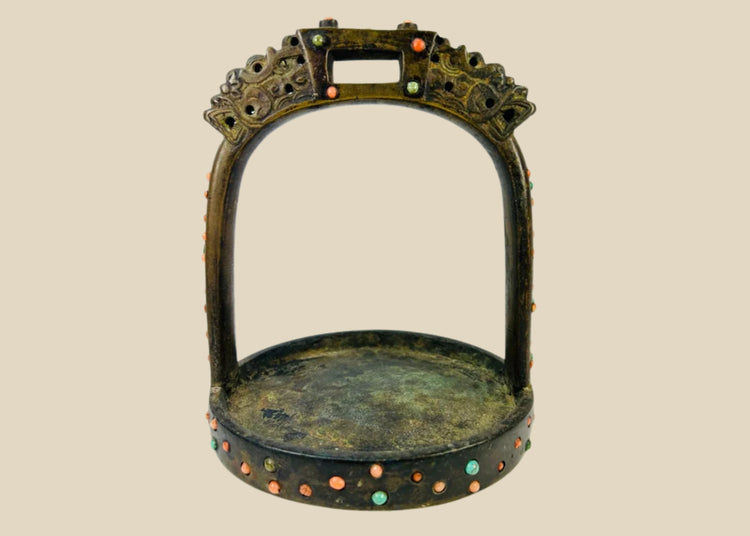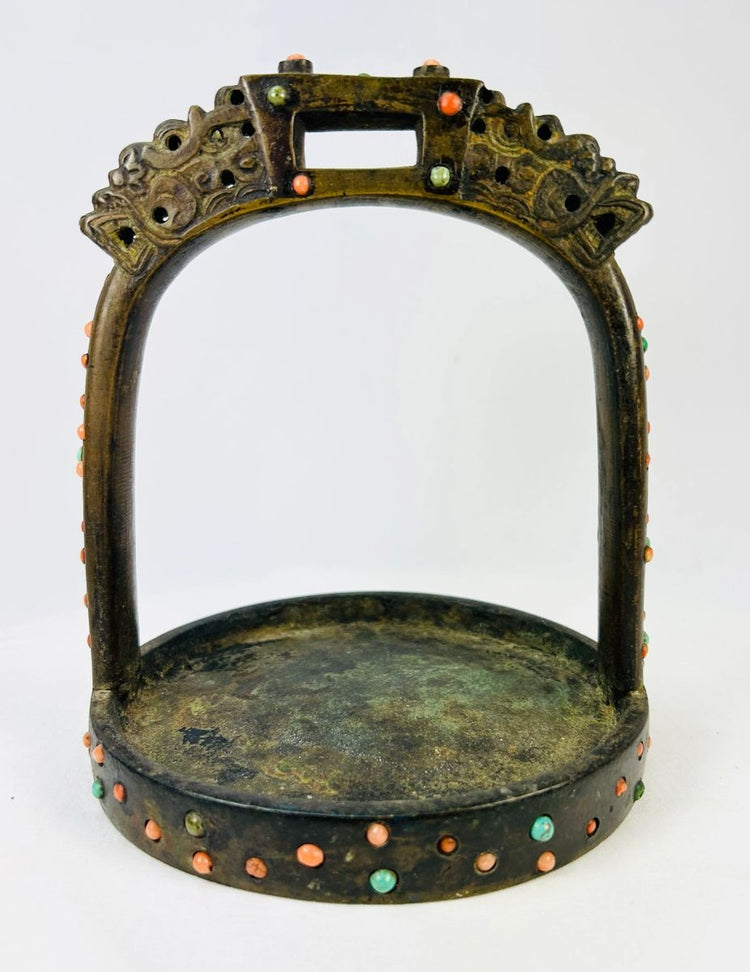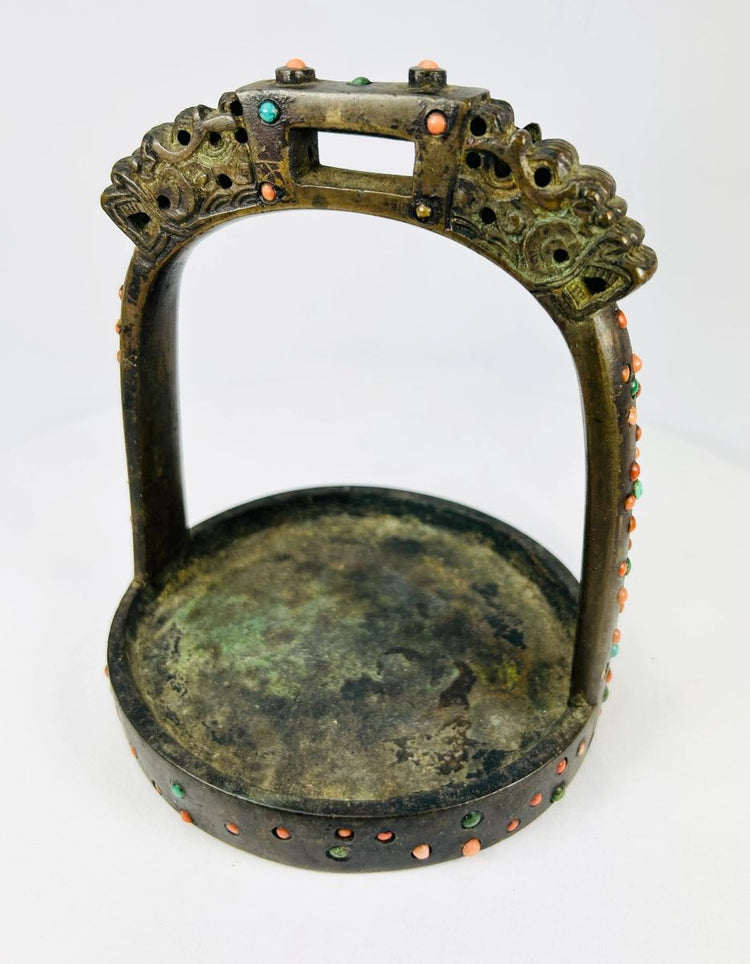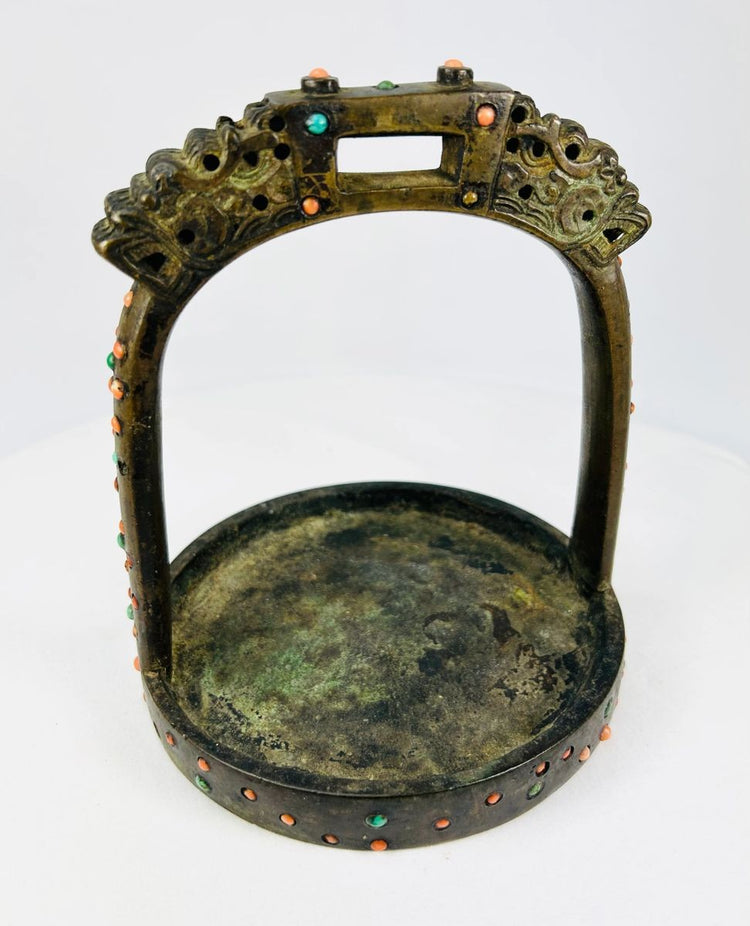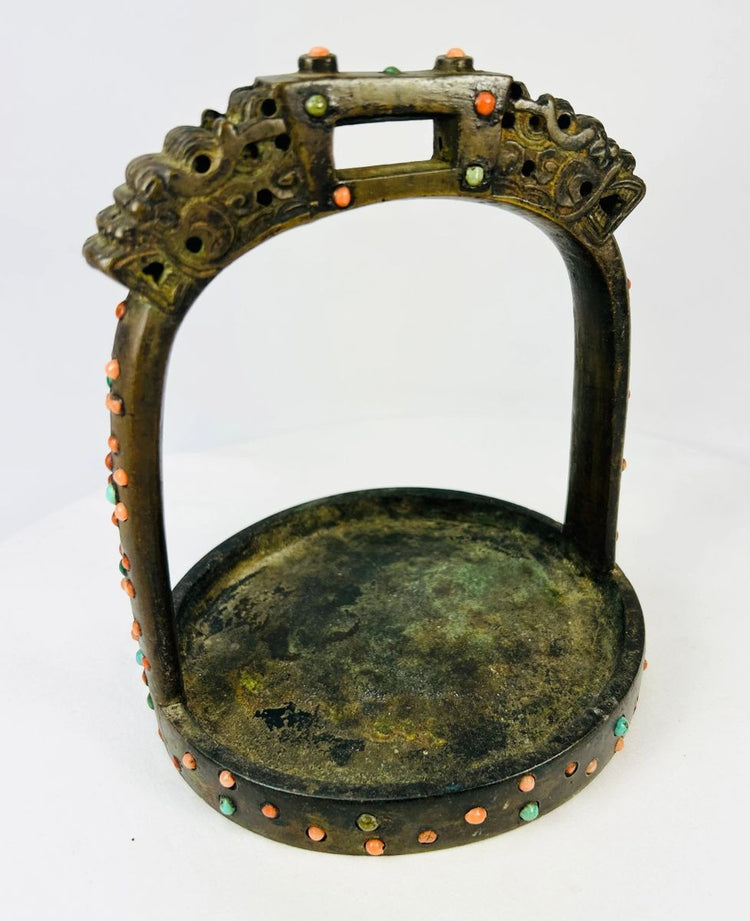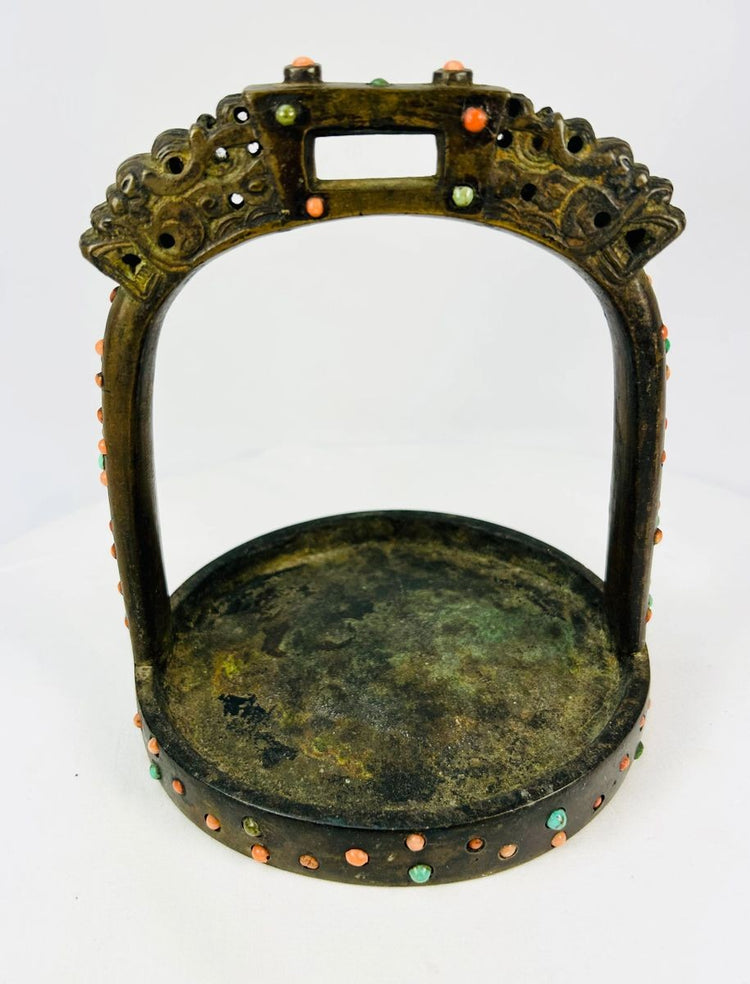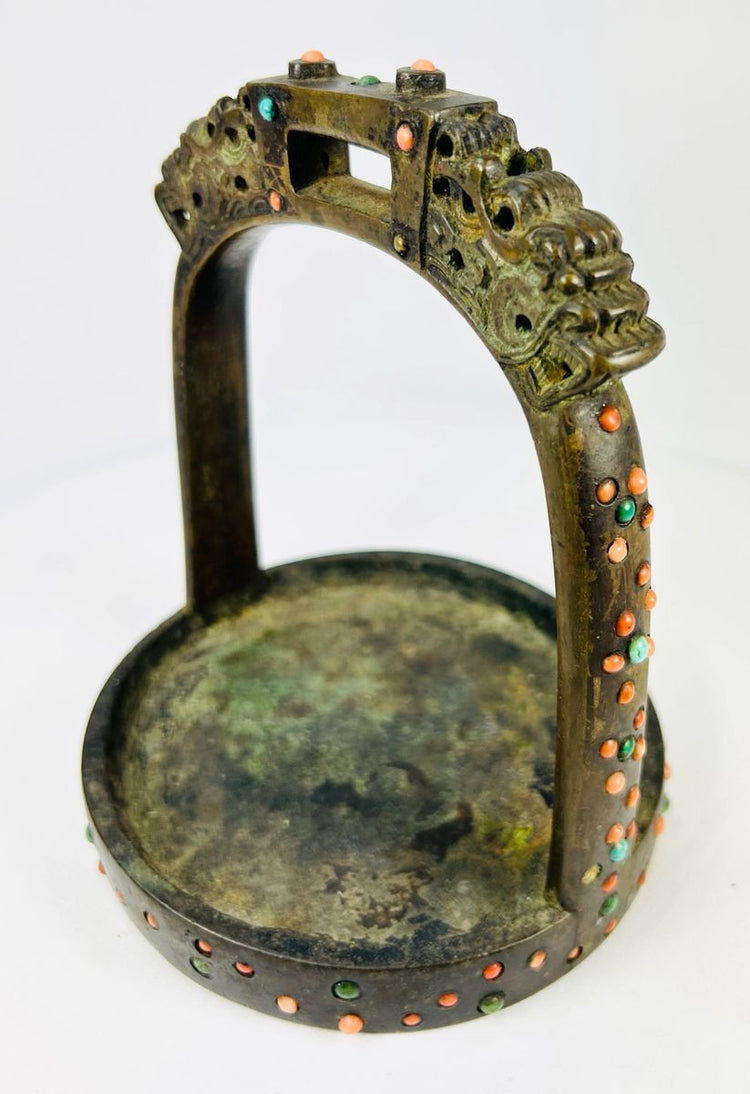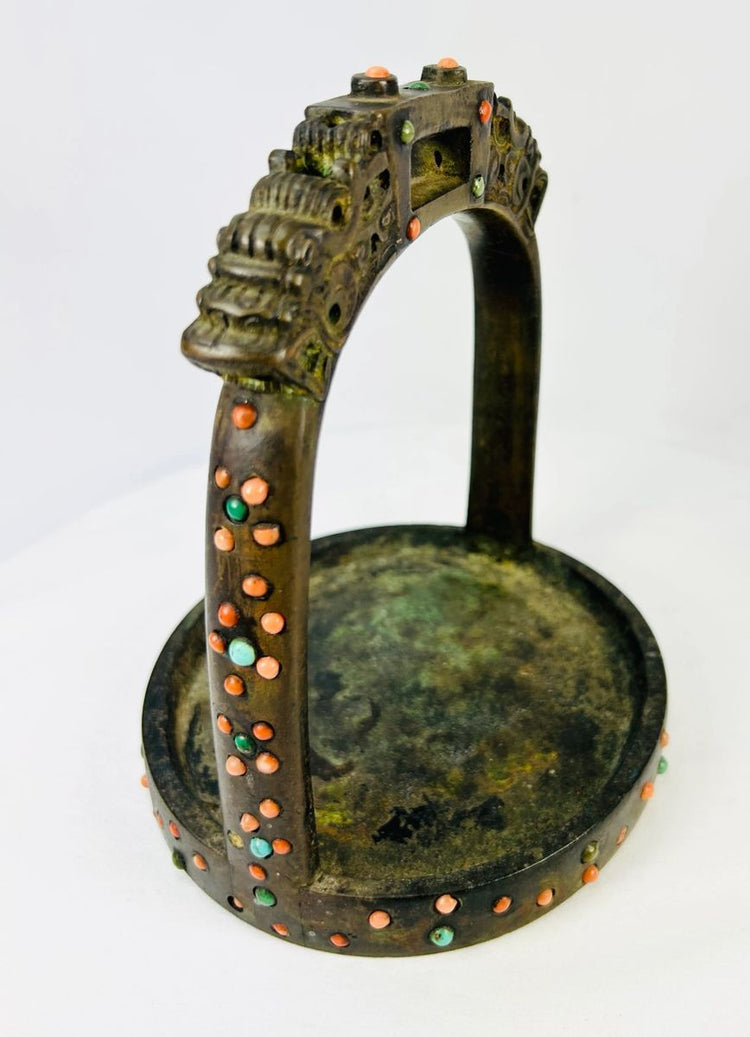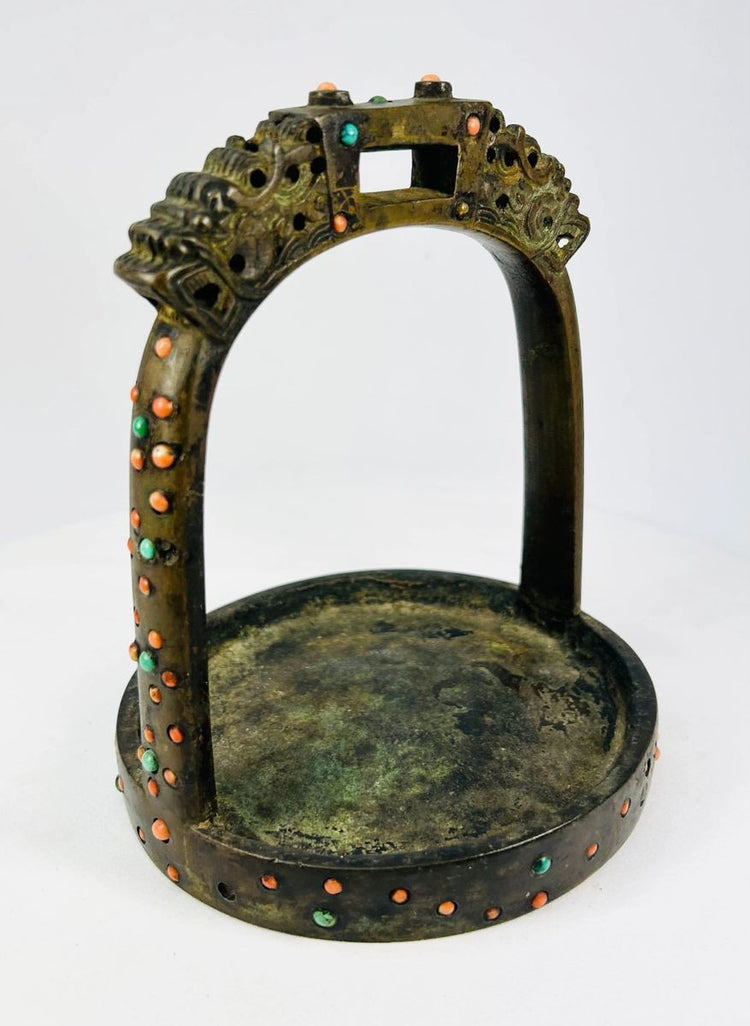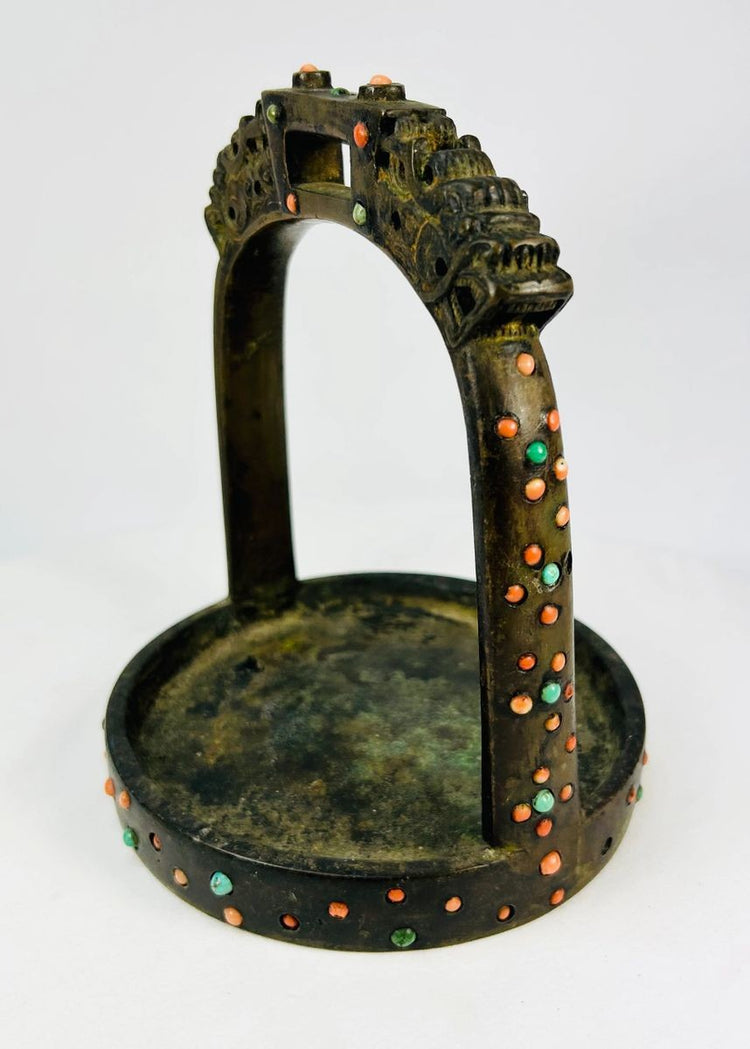Tibetan–Mongolian Bronze Stirrup | Dragon-Head Terminals with Coral and Turquoise Inlay | Late Qing Dynasty | 18th–19th Century
Description
More
Less
Historical Context & Origin
Region: Mongolia or Himalayan Highlands (Tibet/Nepal)
Material: Cast bronze with coral, turquoise, and glass inlays
Period: Circa 1700s–1800s (Late Qing Dynasty)
Description
This extraordinary bronze stirrup was crafted for ceremonial or elite use within Mongolian or Tibetan equestrian culture. Cast in heavy bronze, it features pierced latticework along the arch and dragon-head finials, symbolic of auspicious power and protection. The entire surface is adorned with hand-set coral, turquoise, and polished stones, marking it as an object of high status and prestige. With its wide tread and rectangular top loop, it retains full functionality while displaying the ornate craftsmanship of aristocratic riding gear. Rich patina and verdigris oxidation across the surface testify to its centuries of age and ceremonial use. Such stirrups were often presented as diplomatic gifts, part of dowries, or included in elite burials — making surviving examples exceedingly rare.
Features
- Dragon-head terminals symbolizing strength and spiritual guardianship
- Dozens of hand-set inlays of coral, turquoise, and glass
- Pierced lattice design along the arch
- Wide tread and intact loop for saddle straps
- Rich patina with dark brown and green oxidation from age
Cultural Significance
In Mongolian and Tibetan societies, the horse was revered not only as a means of transport but as a symbol of status, nobility, and cosmic balance. Ceremonial stirrups such as this embodied martial prowess, spiritual protection, and wealth, often reserved for lamas, aristocrats, or military leaders. Their elaborate decoration linked equestrian life with both religious symbolism and social identity, making them treasured possessions passed down through generations.
Condition
Excellent aged condition with natural patina and surface encrustation. Minor inlay loss in places. Structurally sound and stable.
Dimensions (approximate)
Height: 7 in
Width: 6 in
Age
Estimated 200–300 years old — circa 1700s–1800s
Learn More
Dive Into the History & Development of the Stirrup
Description
Historical Context & Origin
Region: Mongolia or Himalayan Highlands (Tibet/Nepal)
Material: Cast bronze with coral, turquoise, and glass inlays
Period: Circa 1700s–1800s (Late Qing Dynasty)
Description
This extraordinary bronze stirrup was crafted for ceremonial or elite use within Mongolian or Tibetan equestrian culture. Cast in heavy bronze, it features pierced latticework along the arch and dragon-head finials, symbolic of auspicious power and protection. The entire surface is adorned with hand-set coral, turquoise, and polished stones, marking it as an object of high status and prestige. With its wide tread and rectangular top loop, it retains full functionality while displaying the ornate craftsmanship of aristocratic riding gear. Rich patina and verdigris oxidation across the surface testify to its centuries of age and ceremonial use. Such stirrups were often presented as diplomatic gifts, part of dowries, or included in elite burials — making surviving examples exceedingly rare.
Features
- Dragon-head terminals symbolizing strength and spiritual guardianship
- Dozens of hand-set inlays of coral, turquoise, and glass
- Pierced lattice design along the arch
- Wide tread and intact loop for saddle straps
- Rich patina with dark brown and green oxidation from age
Cultural Significance
In Mongolian and Tibetan societies, the horse was revered not only as a means of transport but as a symbol of status, nobility, and cosmic balance. Ceremonial stirrups such as this embodied martial prowess, spiritual protection, and wealth, often reserved for lamas, aristocrats, or military leaders. Their elaborate decoration linked equestrian life with both religious symbolism and social identity, making them treasured possessions passed down through generations.
Condition
Excellent aged condition with natural patina and surface encrustation. Minor inlay loss in places. Structurally sound and stable.
Dimensions (approximate)
Height: 7 in
Width: 6 in
Age
Estimated 200–300 years old — circa 1700s–1800s
Learn More
Dive Into the History & Development of the Stirrup
You May Also Like


























